
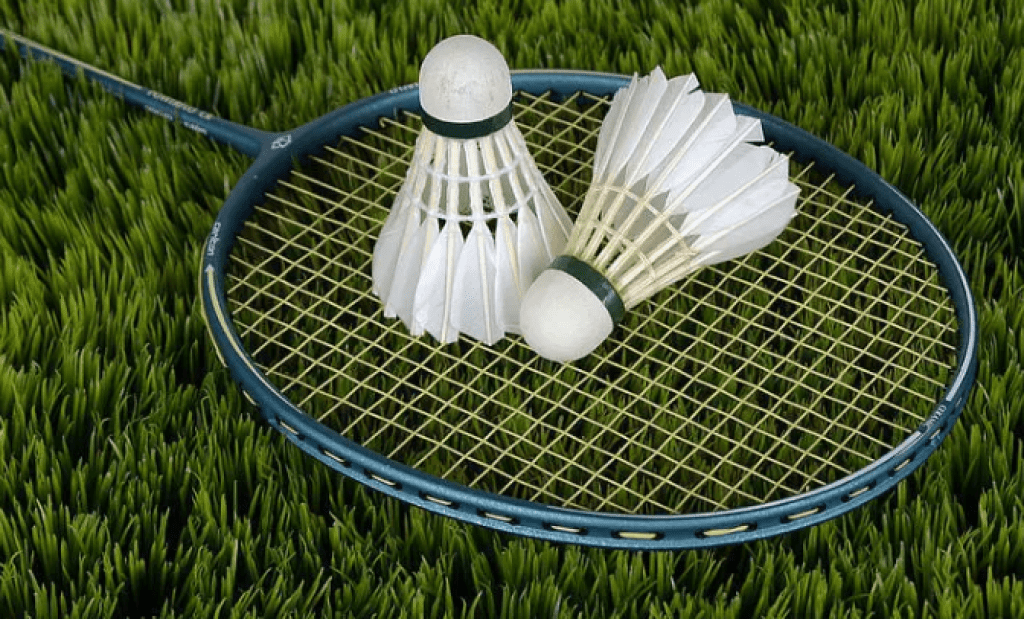
I. Introduction
(1) Popularity of Badminton
Badminton, as a sport that combines competitiveness and entertainment, enjoys immense popularity worldwide. Whether in professional sports venues or in community parks, you can see people swinging their badminton rackets.
There are several reasons for its popularity. Firstly, badminton is flexible in terms of the physical fitness required for participation. People of all ages and physical conditions can engage in this sport. For young people, it is a vigorous form of exercise that helps develop physical coordination and reflexes. For adults, particularly office workers who spend long hours sitting, badminton is an excellent way to relieve stress and relax. For the elderly, moderate badminton activity can maintain physical flexibility and enhance cardiovascular health.
Secondly, badminton has strong social attributes. It can serve as an activity to strengthen friendships or as a bridge for strangers to establish new connections. On the court, people interact, hone their skills, and collectively enjoy the joy of sports.
Moreover, the accessibility of badminton is a significant factor in its widespread appeal. Unlike some sports that require specialized venues and expensive equipment, badminton only needs a relatively open space and a simple set of rackets and shuttlecocks to get started. This makes it easier for more people to engage with and participate in the sport.
Furthermore, badminton holds a significant place in various sports competitions. Events such as the World Badminton Championships and the Olympics attract attention from fans globally, further promoting the sport’s development and popularity.
(2) Importance of the Badminton Racket in the Sport
The badminton racket is the most crucial piece of equipment in the sport, and its importance cannot be overstated. It is not just a tool for hitting the shuttlecock but also an essential medium through which players can showcase their technical skills and execute tactical strategies on the court.
Firstly, the quality and performance of the racket directly influence the effectiveness of the strokes. A high-quality racket can provide better power transfer and control, making players feel more confident in their strokes. For example, the material and shape of the racket frame determine the wind resistance and stability, affecting the speed and accuracy of the shot. The stiffness and elasticity of the shaft are crucial for storing and releasing energy, which is vital for executing high shots, smashes, and other technical maneuvers.
Secondly, the characteristics of the racket influence the player’s technical performance. Different types of rackets, such as offensive, defensive, and balanced, focus on various aspects of design. Offensive rackets typically have a heavier head and stiffer shaft, enhancing the power of the stroke. Defensive rackets prioritize flexibility and quick response, with a lighter head and softer shaft for easier defensive maneuvers. Balanced rackets combine offensive and defensive attributes, suitable for players with a well-rounded skill set. Players need to choose a racket that matches their technical style and tactical needs to maximize their strengths and achieve better results in matches.
Moreover, the comfort of the racket also significantly impacts a player’s performance. Factors like grip thickness, material, and weight distribution affect the player’s hand feel and fatigue level during extended matches. An uncomfortable grip or poorly balanced racket may cause hand fatigue or discomfort, affecting stroke accuracy and power, and even leading to injury.
Additionally, the badminton racket is part of the player’s personal style and image. In modern sports, personalized equipment not only showcases the player’s unique taste but can also boost their confidence and motivation in competition. Some players opt for custom-made rackets to meet specific needs and preferences.
From beginners to professional players, choosing the right badminton racket is crucial. For beginners, an appropriate racket can help them quickly master basic techniques, establish correct stroke mechanics, and develop proper power generation methods. For professional players, the badminton racket is their weapon on the court, a critical partner in achieving dreams and honors.
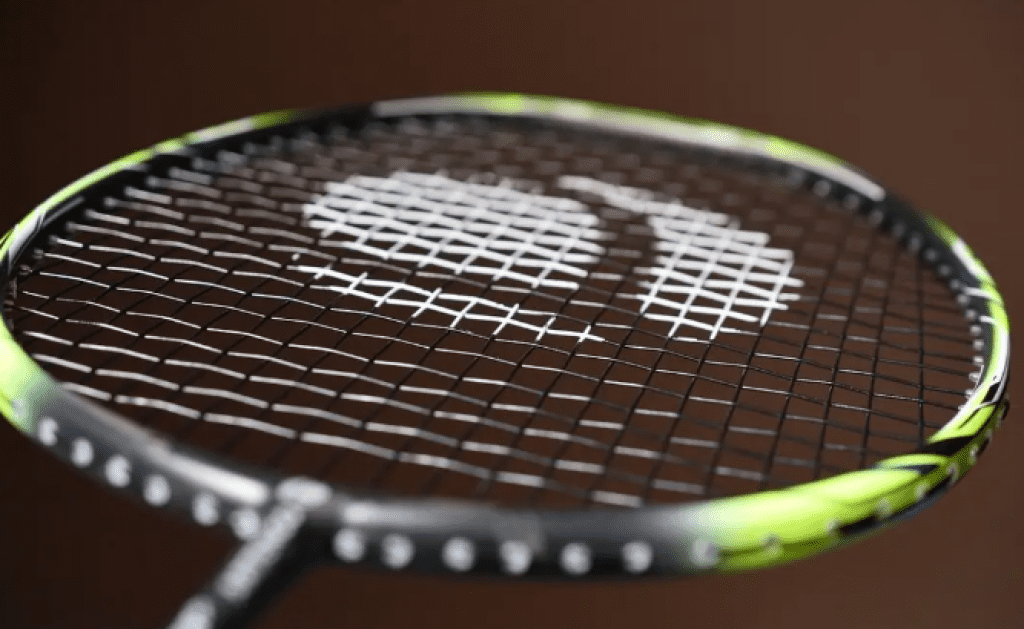
II. Types of Badminton Rackets
Badminton rackets can be classified into various types based on their design features and performance to meet the needs of different users and scenarios.
1. Offensive Rackets
(a) Features and Suitable Users
Offensive rackets typically have the following characteristics:
- Extended Length: Usually 5-10 millimeters longer than standard rackets, increasing the moment of impact and allowing for a higher point of contact, thus enhancing power during offensive plays and posing a greater threat to the opponent.
- Heavier Head: The heavier head increases the racket’s inertia and power during strokes, making smashes more forceful.
- Stiff Shaft: A stiffer shaft provides better support during the stroke, minimizing energy loss and ensuring direct power transmission, enhancing the force and accuracy of the stroke.
- High Balance Point: A balance point closer to the head makes the racket more aggressive during swings, ideal for downward strokes and smashes.
Suitable users include:
- Players with strong physical strength and explosive power who can fully utilize the advantages of an offensive racket to drive powerful strokes.
- Players who prefer an aggressive playstyle, relying on offensive strategies to score points.
- Skilled players capable of accurately controlling stroke direction and power. Offensive rackets require a higher level of technical proficiency to maintain accuracy and stability during aggressive play.
(b) Classic Models
- Yonex Astrox 100ZZ: This racket features an innovative rotational generator system that increases the inertia of the racket head, further enhancing the power of smashes. Its stiff shaft and high balance point design make the offensive play more incisive.
- Victor Thruster K 9900: The frame is made of durable carbon fiber material, enhancing stability and torsional resistance during strokes. The heavier head and stiff shaft provide players with strong offensive capabilities.
2. Defensive Rackets
(a) Features and Suitable Users
Defensive rackets have the following characteristics:
- Lighter Head: A lighter head makes the racket more flexible and faster to swing, allowing for quick reactions and returns during defensive play.
- Soft Shaft: A softer shaft better absorbs the impact of incoming shots, reducing arm vibrations from the opponent’s attacks, and increasing the stability of defensive returns.
- Low Balance Point: A balance point closer to the handle makes the racket easier to swing, facilitating quick defensive maneuvers and counterattacks.
- Larger Face: A larger face provides a greater margin of error, increasing the contact area for defensive returns and improving the success rate of defensive shots.
Suitable users usually include:
- Players with relatively weaker strength: The softer shaft and lighter head reduce the burden during defensive play.
- Players who focus on defense and counterattacks as their main strategy, wearing down their opponent’s stamina with stable defense while looking for counterattack opportunities.
- Players with quick reflexes and agility who can utilize the racket’s flexibility to swiftly respond to the opponent’s attacks and quickly organize effective counterattacks.
(b) Classic Models
- Yonex Nanoray 900: Featuring nanometric technology, this racket is lightweight yet sturdy, with a soft, elastic shaft that makes it easy to handle various incoming shots during defense.
- Victor Jetspeed 12F: The frame’s aerodynamic design reduces wind resistance, making swings quicker. The soft shaft and low balance point design make defense easier and more effortless.
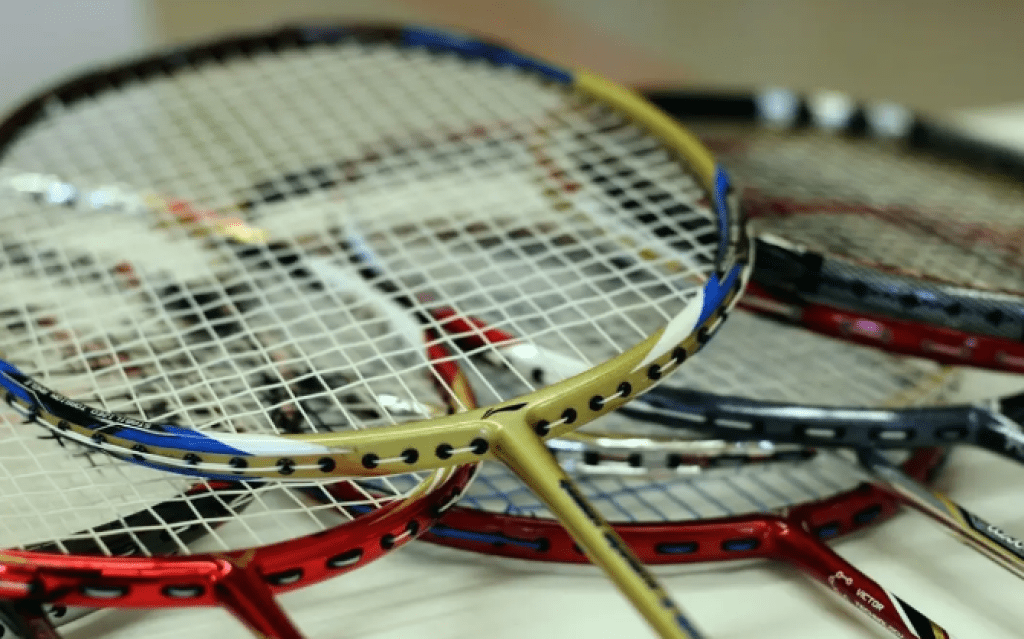
3. Balanced Rackets
(a) Features and Suitable Users
Balanced rackets possess the following characteristics:
- Even Weight Distribution: The weight is balanced between the head and handle, making the racket perform well in both offensive and defensive situations.
- Moderate Shaft Stiffness: The shaft’s stiffness is moderate, providing adequate support during offense while ensuring good control and shock absorption during defense.
- Moderate Balance Point: Typically ranging from 290-295 millimeters, making the racket both flexible and stable during swings.
Suitable users include:
- Amateur enthusiasts: For most amateur players with well-rounded but non-specialized skills, balanced rackets meet their needs in various scenarios, whether for offense, defense, or control.
- Beginners whose technique is not yet developed: It helps them explore and develop their playing style during practice without being limited by the racket’s characteristics.
- Technically well-rounded, versatile players: Players who can flexibly adjust their tactics based on the game situation, switching between offense and defense quickly.
(b) Classic Models
- Li-Ning Windstorm 7000: Utilizing 3D Break-Free technology, the frame is both speedy and stable. The shaft’s moderate stiffness and balance point make it a well-rounded balanced racket.
- Victor Hypernano X7SP: A classic balanced racket, easy to handle, suitable for players of various skill levels.
4. Training Rackets
(a) Features and Suitable Users
Training rackets are characterized by:
- Low Price: Designed to meet beginners’ needs during practice, reducing financial burden.
- Simple Design: Focuses on basic performance and durability without pursuing advanced technologies and materials.
- High Tolerance: Helps beginners more easily make contact with the shuttlecock, building confidence.
Suitable users include:
- Newcomers just starting to learn badminton: Used to learn and master basic stroke techniques and skills.
- Beginners with limited budgets: When financial conditions do not allow for high-end rackets, training rackets serve as a transitional option.
(b) Classic Models
- Kawasaki KD-1: Affordable and stable in performance, suitable for beginners practicing basic skills.
- Kason B110: An entry-level training racket with good durability and tolerance, ideal for beginners.
5. Women’s Rackets
(a) Features and Suitable Users
Women’s rackets typically have the following features:
- Lighter Weight: Considering that women generally have less strength, the racket is usually lighter, reducing the burden on the arms and making strokes easier.
- Softer Shaft: Helps women better generate power and control the shuttle, reducing stroke errors caused by insufficient strength.
- Aesthetic Design: Emphasizes beauty and fashion, with vibrant colors and elegant patterns, catering to women’s preferences.
- Narrower Grip: Designed to fit the smaller hands of women, ensuring a more comfortable grip and enhancing racket control.
Suitable users include:
- Female players with relatively less physical strength, allowing for easier handling of the racket.
- Female players who pursue both performance and aesthetics: Women’s rackets usually balance function and appearance, allowing female players to express their style and personality on the court.
- Female players with quick reflexes and agility, fully utilizing the lightweight and flexible design of the women’s racket to execute various techniques and tactics.
(b) Classic Models
- Yonex Astrox 88S Pro: The lightweight frame and soft shaft make it easier for women to perform smashes and quick exchanges. Its design is aesthetically pleasing, making it popular among female players.
- Victor DriveX 9X: The racket has a narrower grip and lighter overall weight, specifically designed for female players. The balance point is moderate, suitable for various playing styles.
6.Senior Rackets
(a) Features and Suitable Users
Senior rackets have the following features:
- Extremely lightweight: Reduces the burden on the arms, preventing fatigue and injury from prolonged use.
- Very soft shaft: Provides better flexibility and shock absorption, protecting the joints of seniors.
- Larger racket head: Increases the margin for error when hitting the shuttlecock, improving the success rate of shots.
The primary users are senior badminton enthusiasts, particularly:
- Elderly individuals with declining physical functions, limited strength, and flexibility: The lightweight design and excellent shock absorption allow them to participate in sports more comfortably.
- Seniors focused on fitness and leisure: They prioritize safety and comfort in their activities rather than intense competition.
(b) Classic Models
- Bonny Senior Generation 2: Lightweight, soft shaft, and large racket head, specifically designed for seniors.
- Kawasaki Senior Racket: Made with ultra-light materials and a soft shaft design, offering an easy hitting experience for seniors.
7.Children’s Rackets
(a) Features and Suitable Users
Children’s rackets have the following features:
- Smaller size: Designed according to the height and arm length of children, making it easier for them to hold and swing.
- Extremely lightweight: Considering children’s weaker strength, it avoids causing a burden.
- Safety design: Features such as rounded edges to prevent accidental injuries.
Suitable users are child badminton enthusiasts, especially:
- Children in their growth stage with undeveloped strength.
- Children just starting to learn badminton, needing to cultivate interest and foundational skills.
(b) Classic Models
- Decathlon Children’s Badminton Racket: Suitable size and weight for children, affordable with good value for money.
- Double Happiness Children’s Racket: Cute appearance, reliable quality, and popular among children.
8.Non-Professional Low-Cost Rackets
(a) Features and Drawbacks
Non-professional low-cost rackets usually have the following features:
- Low price: This is the most obvious characteristic, often attracting consumers with a lower price point.
- Inferior materials: Typically made from cheaper alloys or composite materials instead of high-quality carbon fiber.
- Simple design: Lacks professional research and optimization, resulting in average performance.
The main drawbacks include:
- Poor performance: The power transfer, control accuracy, and stability are all subpar, affecting the quality of shots and overall experience.
- Low durability: Prone to damage with a short lifespan.
- Potential safety hazards: If the quality is substandard, the racket may break during use, posing a risk of injury.
Due to these drawbacks, such rackets are not recommended for regular formal badminton play and are only suitable for occasional recreational use.、
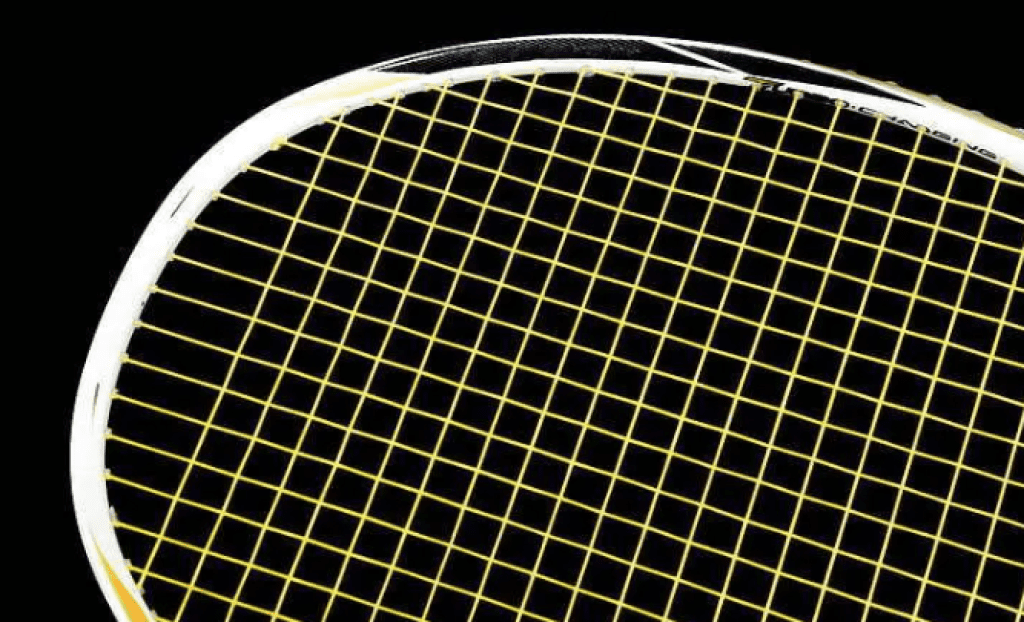
III. Badminton Racket Parameters
1. Handle Thickness (G)
(a) Measurement Method and Representation
The thickness of a badminton racket handle is typically indicated by a “G” measurement. The method involves measuring the circumference of the handle, with common specifications being G2, G3, G4, and G5. A G2 handle has a circumference of approximately 83mm, G3 is around 86mm, G4 is about 89mm, and G5 is around 92mm. The larger the number, the thinner the handle.
(b) Impact of Different Handle Thicknesses on Play
- Thicker Handles: Provide a larger gripping area and greater stability, allowing better power transfer during shots. They reduce hand vibrations, particularly when making powerful smashes or drives, giving players a more solid feedback. However, thicker handles may limit hand flexibility for delicate technical shots, such as net play, where quick wrist movements are required.
- Thinner Handles: Offer more flexibility and room for hand movement, making it easier to execute quick direction changes and precise control shots. However, they may place more pressure on the hand and cause discomfort during powerful impacts.
(c) How to Choose the Right Handle Thickness
Choosing the appropriate handle thickness involves several factors, including hand size, grip strength, and playing style. Generally, you can determine the right thickness by:
- Measuring Palm Width: Use a ruler to measure the width of your palm at the base (thumb side). A smaller width may suit a thinner handle, while a larger width may be better suited for a thicker handle.
- Testing Different Sizes: If possible, try gripping handles of different thicknesses in a physical store to see which one feels most comfortable and easy to control.
- Considering Playing Style: If your style is more aggressive, with frequent powerful shots, a thicker handle might be more suitable. Conversely, if you focus on control and agility, a thinner handle might be better suited to your needs.
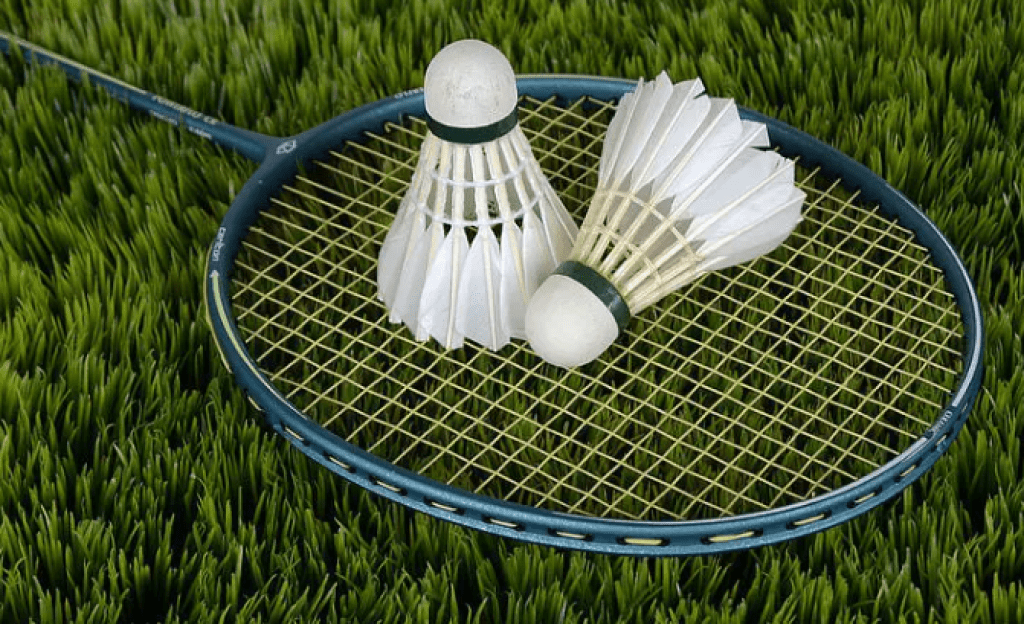
2. Racket Weight (U)
(a) Characteristics of Different Weights
- 2U (90 – 94 grams): These rackets are heavier and offer greater inertia, which can generate more power during shots, making them suitable for power players, particularly effective in smashes. However, due to their heavier weight, they have a slower swing speed and require higher strength and stamina from the player.
- 3U (85 – 89 grams): This is a common weight specification that strikes a balance between power and speed. It provides enough power while not being too heavy to affect swing speed, making it suitable for most players with a decent level of strength and skill.
- 4U (80 – 84 grams): Lighter and more agile, this weight allows for faster swings and greater flexibility, ideal for quick reactions and continuous attacks. However, it might lack some power compared to heavier rackets, making it better for players focusing on speed and defensive counter-attacks.
- 5U (75 – 79 grams): Extremely lightweight, these rackets almost eliminate the burden of swinging, making them particularly suited for players with less strength or female players. However, their light weight requires precise control and technique to compensate for the lower power output.
(b) Impact of Weight on Power and Speed
- Heavier Rackets: Due to their greater mass, they can accumulate more kinetic energy during the swing, resulting in more powerful shots and faster shuttle speeds, especially noticeable in smashes. However, they require more strength to handle, which can affect swing speed and reaction time if the player is not strong enough.
- Lighter Rackets: Offer faster swing speeds and quicker reaction times, advantageous for defense and rapid counter-attacks. However, the reduced weight results in less power during shots, necessitating faster swings and precise hitting to achieve higher shuttle speeds.
(c) How to Choose Based on Strength and Playing Style
- Strength Factors: If you have considerable strength and good fitness, you might opt for a 3U or even a 2U racket to fully utilize your power advantage and increase shot effectiveness. For players with less strength, such as women or beginners, a 4U or 5U racket is recommended to ensure easy handling and to avoid deformation or injury due to insufficient power.
- Playing Style Factors: Offensive players who favor powerful smashes may prefer heavier rackets to enhance their attacking power. Conversely, defensive or speed-oriented players generally choose lighter rackets to react and return shots more swiftly.
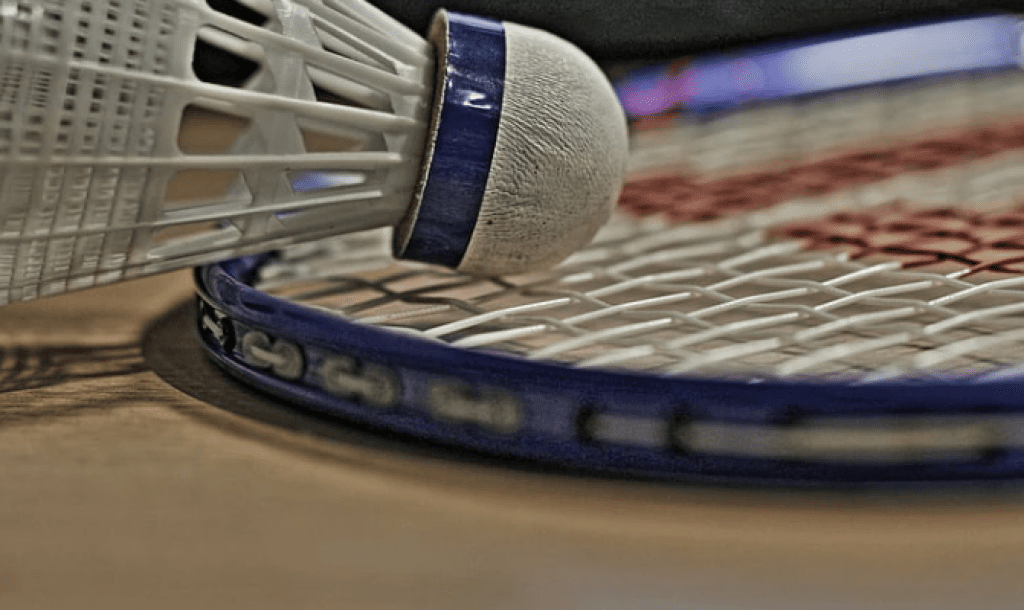
3. Shaft Stiffness (S)
(a) Stiffness Levels and How to Determine
- Levels of Stiffness: Shaft stiffness is typically categorized into five levels: Hard, Slightly Hard, Medium, Slightly Soft, and Soft.
- Determination Methods:
- Manufacturer’s Labels: Check the racket specifications provided by the manufacturer.
- Personal Testing: Try hitting with the racket to feel the degree of bending and rebound speed of the shaft.
(b) Relationship Between Shaft Stiffness, Shot Control, and Power Transfer
- Shot Control:
- Hard Shaft: Provides minimal bending during impact, resulting in more precise power and direction transmission, leading to better shot accuracy and control. However, it requires higher skill and strength, and has a lower tolerance for errors.
- Soft Shaft: Allows for greater bending, which helps absorb and cushion the impact of the shuttlecock, offering more forgiveness in control but making it harder to precisely control shot direction and power.
- Power Transfer:
- Hard Shaft: Transfers power to the shuttlecock quickly, resulting in more powerful shots, suitable for players with significant strength and developed power techniques.
- Soft Shaft: Requires more effort and technique to drive the shuttlecock but provides a certain degree of elasticity, which can be beneficial for players with less power or those who are still mastering their hitting technique.
(c) Shaft Stiffness Choices for Beginners and Advanced Players
- Beginners: It is generally recommended to choose rackets with a slightly soft or medium shaft stiffness. This allows players to leverage the shaft’s elasticity to achieve better shots and reduces the risk of injury due to improper power application. As skills improve, players can gradually experiment with stiffer shafts to enhance shot control and power transfer efficiency.
- Advanced Players: Choose based on personal technical characteristics and playing style. For players who prioritize control and precision and have strong power techniques, a hard shaft might be preferred. If players prefer to use the shaft’s elasticity to add variety to their shots and save energy, a slightly soft shaft could be more suitable.
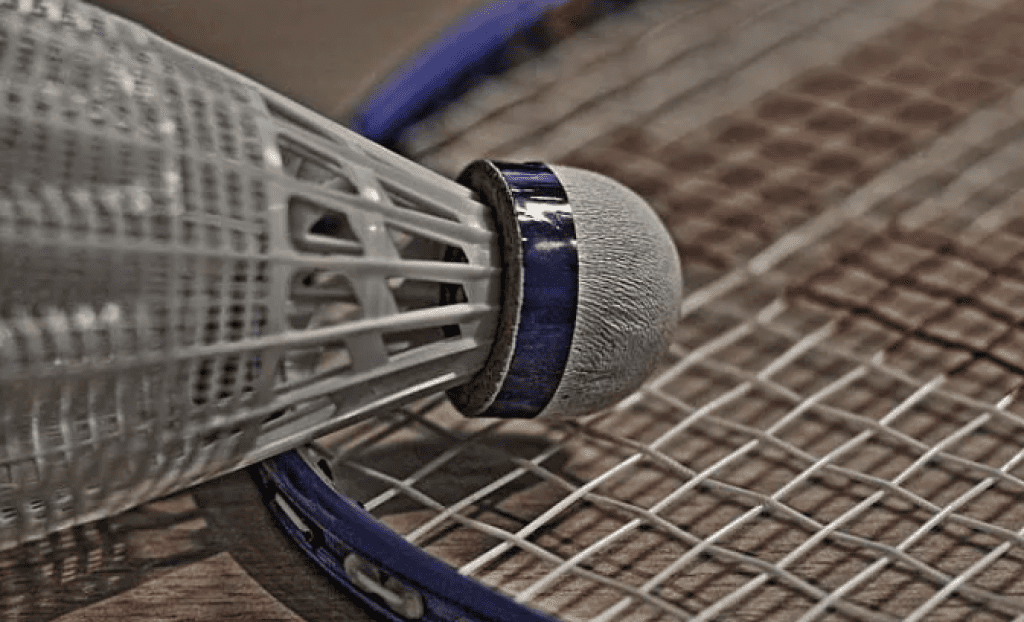
4. Balance Point
(a) Measurement and Calculation
- Balance Point: The balance point refers to the distance from the bottom of the handle to the center of gravity of the racket. To measure it:
- Place the racket horizontally on a support point.
- Adjust the support point until the racket is balanced.
- Measure the distance from the bottom of the handle to this balanced point, which is the balance point.
(b) Impact of Balance Point on Racket Performance (Offense, Defense, Control)
- Offensive Performance: Rackets with a balance point closer to the head (greater than 295mm) are generally considered offensive rackets. These rackets have greater inertia and power during shots, making it easier to generate strong attacks, particularly during smashes.
- Defensive Performance: Rackets with a balance point closer to the handle (less than 285mm) are considered defensive rackets. They offer greater maneuverability and faster reaction times, which is advantageous for quick returns and direction changes during defensive play.
- Control Performance: Rackets with a balance point between 285mm and 295mm offer a balanced control performance. They provide adequate power support during attacks while maintaining good flexibility and stability for defense and control.
(c) Adjusting Balance Point Based on Playing Style
- Offensive Style: Choose a racket with a higher balance point to enhance attacking power. This can be achieved by adding weight to the head (e.g., lead tape) or selecting a racket designed specifically for offense.
- Defensive Style: Opt for a racket with a lower balance point to improve reaction speed and maneuverability. This can be done by reducing the head weight or choosing a racket designed for defense.
- Control Style: Select a racket with a medium balance point based on your focus on attack and defense, and combine it with other parameters (e.g., shaft stiffness, frame shape) for more precise control.
5. Racket Frame Section
(a) Characteristics of Box Frame, Aero Frame, and Hybrid Frame
- Box Frame: Also known as the box-shaped frame, it has a more rectangular cross-section and a thicker edge. Its features include:
- Advantages: High stability, minimal deformation during impact, accurate power transfer, and control, ideal for offensive players, especially effective in powerful smashes.
- Disadvantages: Higher wind resistance and relatively slower swing speed.
- Aero Frame: Has a diamond or streamlined cross-section with a thinner edge. Its features include:
- Advantages: Low wind resistance, fast swing speed, and quick responses, suitable for defensive and fast reactions, commonly seen in doubles.
- Disadvantages: Lower stability and power transfer, requires higher technical skill.
- Hybrid Frame: Combines features of both box and aero frames. Typically, the upper part of the frame uses aero design while the lower part uses box design, or different section shapes are used in various positions. Its features include:
- Advantages: Balances the strengths of both box and aero frames, suitable for diverse playing styles.
- Disadvantages: More complex design and manufacturing, higher cost.
(b) Pros and Cons of Different Frame Sections
- Box Frame:
- Pros: Good stability, powerful shots, precise control.
- Cons: Higher wind resistance, slower swing speed.
- Aero Frame:
- Pros: Fast swing speed, responsive.
- Cons: Lower stability and power transfer, higher skill required.
- Hybrid Frame:
- Pros: Combines advantages of both box and aero frames, versatile performance.
- Cons: More complex design and higher cost.
(c) Suitable Scenarios and Players
- Box Frame: Ideal for power players and offensive styles, especially in singles where powerful smashes and precise control are crucial.
- Aero Frame: More suited for speed-oriented and defensive players, as well as doubles where quick reactions and agile movement are needed.
- Hybrid Frame: Suitable for players with well-rounded skills and varied playing styles, offering good performance in different match scenarios and tactical needs.
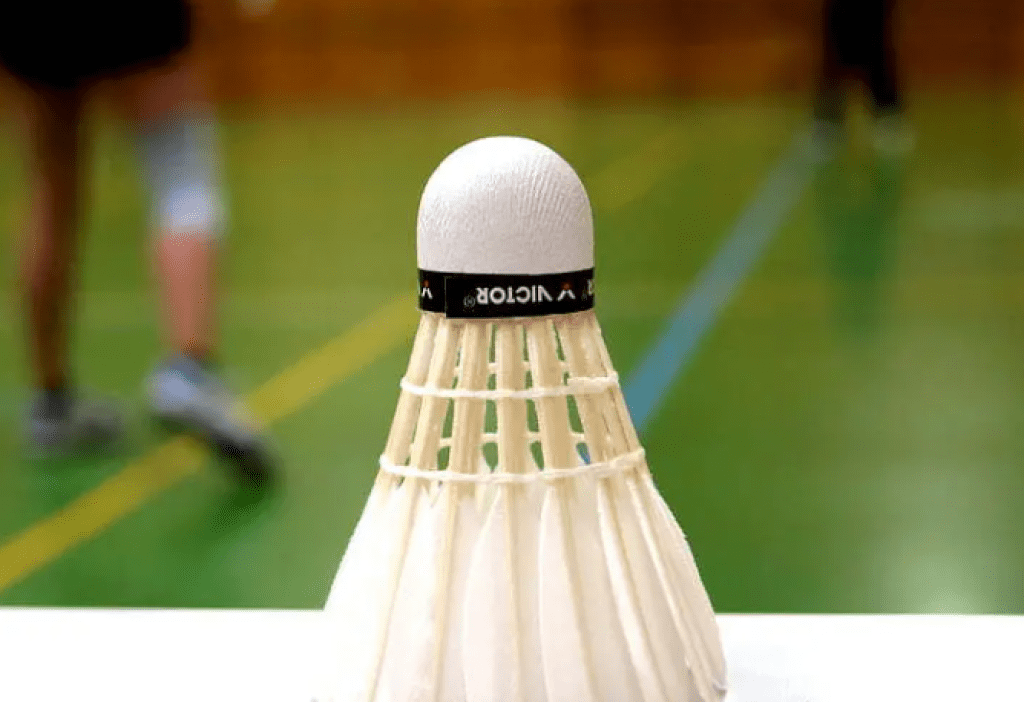
6. Racket Head Shape
(a) Characteristics of Square and Round Racket Heads
- Square Head:
- Features: Larger head area and a bigger sweet spot.
- Advantages: Higher tolerance, making it easier to hit the shuttlecock, generating greater power and speed, particularly advantageous for attacking shots.
- Round Head:
- Features: Smaller head area with a more concentrated sweet spot.
- Advantages: More precise control, especially effective in handling net shots and detailed technical movements.
(b) Impact of Racket Head Shape on Sweet Spot and Shot Effectiveness
- Sweet Spot:
- Square Head: The larger sweet spot means that hitting within a broader area of the head still produces good results, reducing power loss and control deviation when the shuttlecock does not hit the exact center.
- Round Head: The smaller sweet spot requires greater accuracy in hitting. However, when the shuttlecock does hit the sweet spot, the control and accuracy are often superior.
- Shot Effectiveness:
- Square Head: Provides greater power and speed for offensive shots.
- Round Head: Facilitates more precise control and refined technique, especially useful in defensive situations and detailed shot execution.
(c) Choosing Based on Skill Level
- Beginners: It is recommended to choose a square head racket because the larger sweet spot increases the chances of successful hits, helping beginners build confidence and develop correct hitting techniques.
- Intermediate Players: As skills improve, the choice can be based on personal playing style and technical preferences. Square heads may be preferable for those focusing on power and offense, while round heads might be better for players who excel in control and technical precision.
- Advanced Players: Typically choose based on specific match needs and opponent conditions, or stick with a particular head shape that aligns with their established technical habits and preferences.
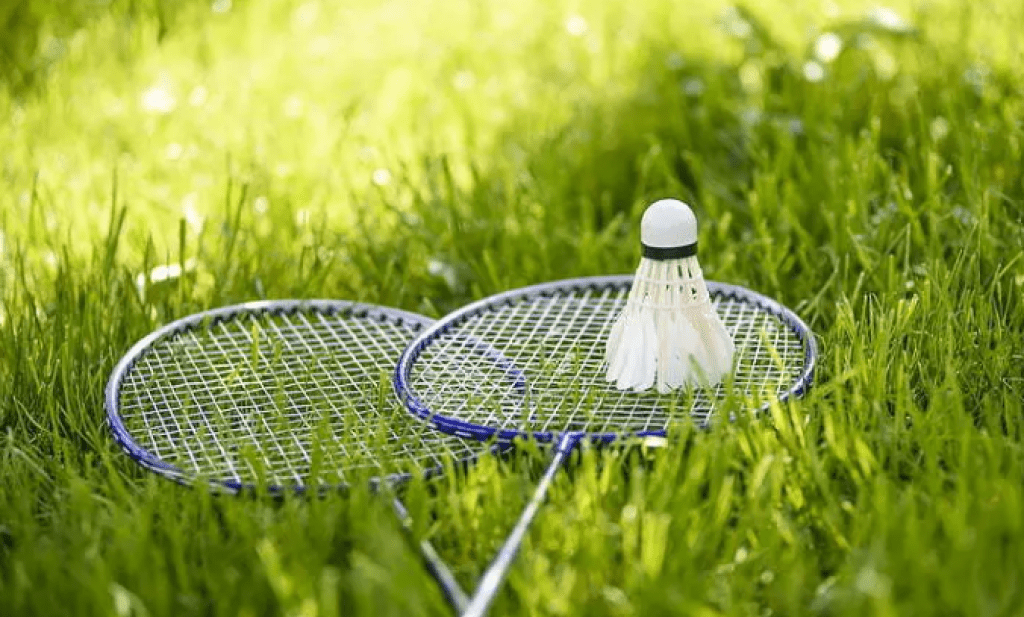
7. String Tension
(a) Characteristics of Different Tensions (Low, Medium, High)
- Low Tension (Below 20 lbs):
- Characteristics: Strings are looser with greater elasticity, noticeable deformation and rebound of the strings when hitting the shuttlecock.
- Advantages: Easier on the arm, requires less effort to hit the shuttlecock, but provides less precision in control and stability in trajectory. Suitable for beginners and players with less strength.
- Medium Tension (20 – 26 lbs):
- Characteristics: Balances elasticity and control. Offers a good mix of power support and control over the shuttlecock’s placement and direction.
- Advantages: Suitable for most recreational players, providing a blend of power and precision.
- High Tension (Above 26 lbs):
- Characteristics: Strings are tightly strung with less elasticity. Requires more power to hit effectively but offers better precision in control and faster shuttlecock speed.
- Advantages: Ideal for powerful and skilled players who can handle the increased demand for strength and technique.
(b) Relationship Between Tension, Control, Power, and Speed
- Control:
- Higher tension results in a firmer string bed, which provides greater control and accuracy in directing the shuttlecock’s flight path. However, it also demands higher technical skill and strength from the player.
- Power:
- Lower tension offers more elasticity, which helps players generate power more easily and hit the shuttlecock farther. Higher tension requires greater physical strength to maximize the performance of the racket.
- Speed:
- High tension strings allow for quicker shuttlecock speed due to reduced elasticity, enabling more direct energy transfer to the shuttlecock. Lower tension strings produce slower speeds because of their greater elasticity.
(c) Tension Recommendations for Beginners and Advanced Players
- Beginners: Start with lower tension (e.g., 20 – 22 lbs) to get familiar with basic techniques and power generation. This prevents difficulties in handling the racket and reduces the risk of injury or poor technique development due to excessively tight strings.
- Intermediate Players: As skills and strength improve, gradually increase tension to medium levels (22 – 24 lbs) to enhance control and feedback. When reaching a higher technical level with sufficient strength and control, higher tension (24 lbs and above) can be explored to further improve precision and speed.
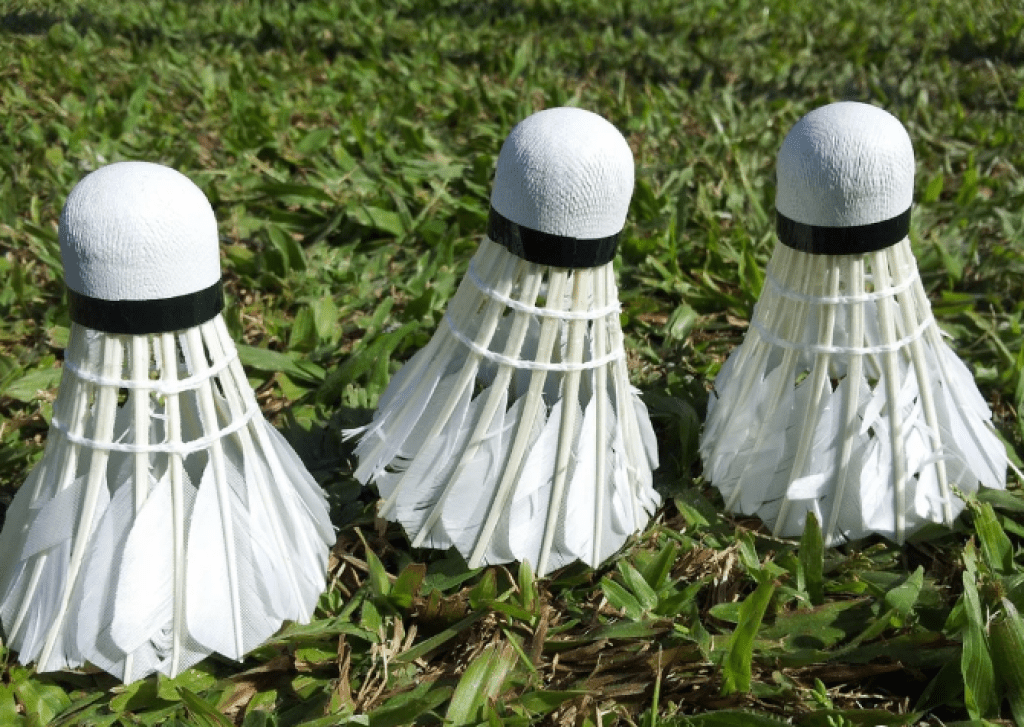
Ⅳ. Racket Materials
1. Metal Material
(a) Characteristics and Drawbacks
- Characteristics:
- High Strength: Metal materials generally have high strength and rigidity, allowing them to withstand significant impacts and resist damage.
- Affordable: Compared to advanced materials like carbon fiber, metal is less expensive, making rackets more budget-friendly and accessible for cost-conscious consumers.
- Durability: Metal rackets are durable under normal use and less prone to cracking or breaking.
- Drawbacks:
- Heavy Weight: The higher density of metal results in a heavier racket, which can increase the player’s burden over long periods and affect swing speed and agility.
- Poor Elasticity: Metal has relatively poor elasticity, leading to less efficient energy transfer during impact, which can affect the speed and power of shots.
- Ineffective Shock Absorption: Metal produces significant vibrations upon impact and has poor shock absorption, potentially causing hand fatigue or injury, particularly during prolonged, intense play.
- Inferior Control: Due to its hardness and elasticity, metal rackets generally offer less precision and touch in controlling the shuttlecock, making it harder to achieve delicate shot control and accuracy.
(b) Suitable Scenarios and Users
- Suitable Scenarios:
- Recreational Play: Metal rackets are sufficient for occasional players who use badminton primarily for enjoyment and relaxation.
- Beginner Practice: For beginners who are just starting and have not yet mastered proper technique, metal rackets are a cost-effective choice for basic practice. The affordability of metal rackets mitigates the financial impact of potential damage during learning.
- Suitable Users:
- Children and Teens: Their developing strength and skills mean they have lower performance requirements. The affordability of metal rackets makes them a good option for initial exposure to the sport.
- Budget-Conscious Consumers: For those with limited interest in badminton or who play infrequently, metal rackets offer a practical, budget-friendly option.
- Powerful Beginners: Beginners with more strength but less skill may benefit from the durability of metal rackets, as they can handle greater impacts and provide a robust option during their early stages of play.
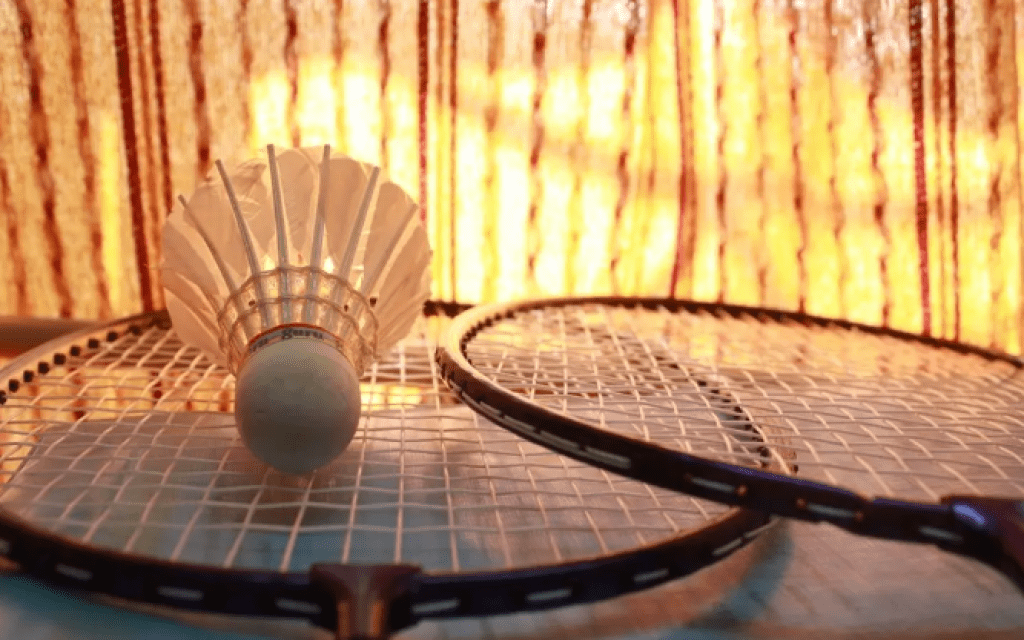
2. Carbon Fiber Material
(a) Advantages and Development Trends
- Advantages:
- Lightweight: Carbon fiber has a low density, making rackets lighter and reducing the player’s burden during matches and training. This enhances swing speed and reaction ability.
- High Strength: Carbon fiber’s high strength allows it to withstand intense impacts and distortions, ensuring the racket remains durable and resistant to deformation or damage during vigorous play.
- High Elasticity: Carbon fiber offers excellent elasticity, effectively converting the player’s power into shuttlecock speed and force, which enhances shot power and distance.
- Good Shock Absorption: Carbon fiber effectively absorbs vibrations during impact, reducing hand shock and the risk of injury, while improving the comfort of play.
- Precise Control: Carbon fiber rackets provide a sensitive touch and precise control, allowing players to accurately direct the shuttlecock and execute refined techniques.
- Development Trends:
- Material Innovation: Ongoing advancements in technology are leading to new carbon fiber composites with improved strength, elasticity, and reduced weight, further enhancing racket performance.
- Manufacturing Process Optimization: Advanced manufacturing techniques, such as 3D printing and weaving technologies, are increasingly used in racket production to create more rational structures and superior performance.
- Personalized Customization: Using advanced technology, rackets can be custom-made based on players’ physical conditions, technical characteristics, and playing styles to achieve the best match and performance.
- Smart Integration: Future rackets may incorporate smart technology, such as built-in sensors to monitor shot data and player metrics in real time, connecting with devices like smartphones for personalized training advice and data analysis.
- Environmental Sustainability: There will be a greater focus on environmental sustainability in carbon fiber production and racket manufacturing, reducing environmental impact and promoting the recycling and reuse of old rackets.
(b) Types of Carbon Fiber Materials and Their Characteristics
- Standard Modulus Carbon Fiber: The most common type, offering a good balance of strength and cost. It has moderate strength and elasticity, suitable for most recreational and intermediate players.
- High Modulus Carbon Fiber: Features higher strength and modulus, though at a higher cost. Rackets made from this material provide stronger power transmission and precise control, ideal for advanced players and professionals with demanding performance needs.
- Ultra High Modulus Carbon Fiber: The top tier of carbon fiber materials with extremely high strength and modulus. Rackets made from ultra-high modulus carbon fiber offer unparalleled performance but are expensive and typically used in high-end professional rackets.
- Nanocarbon Fiber: Treated with nanotechnology to enhance microscopic structure and performance. It maintains high strength and elasticity while improving toughness and fatigue resistance, making rackets more durable.
- Hybrid Carbon Fiber: Combines different types of carbon fibers or blends carbon fiber with other materials (e.g., glass fiber, Kevlar) to optimize performance. For example, mixing high modulus carbon fiber with standard modulus can reduce costs while maintaining strength, or combining carbon fiber with other materials to improve specific attributes like shock absorption or torsional resistance.
Different types of carbon fiber materials vary in strength, elasticity, weight, and price. Manufacturers select the appropriate carbon fiber type based on product positioning and target user groups to meet diverse consumer needs.
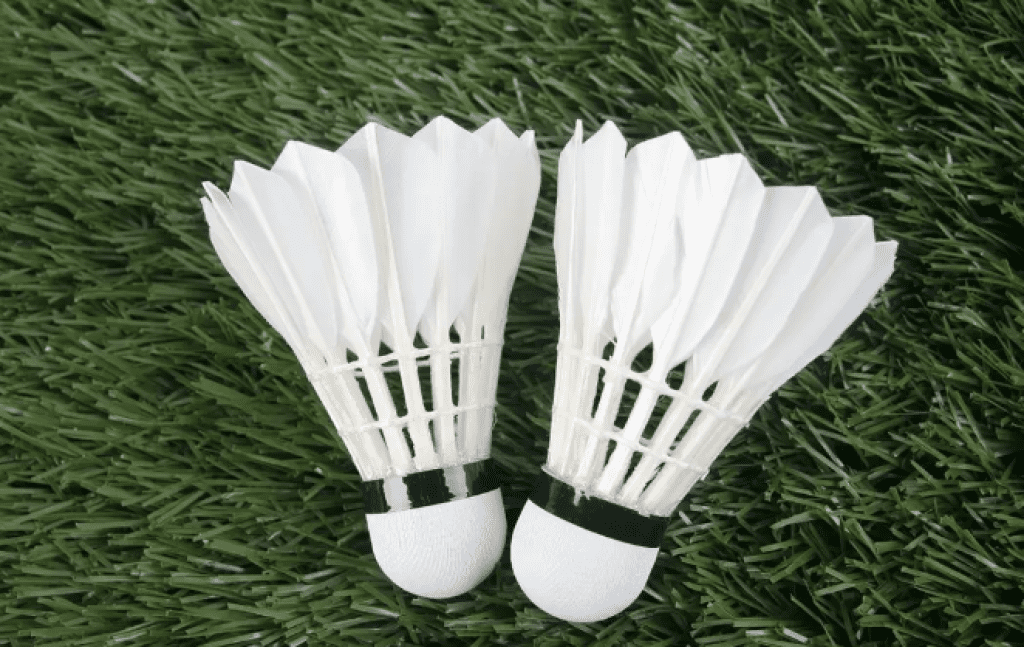
Ⅴ. Renowned Badminton Racket Brands and Product Recommendations
1. YONEX
(a) Brand Characteristics
YONEX is a globally renowned badminton brand known for:
- Technological Innovation: YONEX invests significantly in research and development, introducing cutting-edge technologies and designs such as nanotechnology and Power Cushion to enhance racket performance and feel.
- Exceptional Quality: YONEX maintains rigorous quality control, ensuring high standards from material selection to manufacturing processes. This guarantees durability and stability in every racket.
- Diverse Product Range: Their product line spans from entry-level to professional-grade rackets, catering to players of various skill levels and preferences.
- Strong Brand Reputation: YONEX is widely recognized and respected worldwide for its commitment to high quality and performance.
(b) Popular Product Recommendations
- YONEX Astrox 100ZZ
- Description: Featuring new-dimensional carbon materials, the Astrox 100ZZ enhances frame flexibility and rebound, boosting shot power and speed. It has a moderately stiff shaft and high balance point, making it ideal for aggressive play.
- YONEX Arcsaber 11
- Description: This classic balanced racket has a large sweet spot and high forgiveness. With a medium-stiff shaft, it performs well in both attacking and defensive scenarios, suitable for players with an all-around skill set.
- YONEX Duora 800
- Description: Designed for speed, the Duora 800 features a thin frame to reduce air resistance, allowing for rapid swings. It has a stiffer shaft, making it suitable for quick reactions and doubles play.
2. VICTOR
(a) Brand Characteristics
VICTOR is renowned for:
- Cost-Effectiveness: VICTOR offers high-quality products at relatively affordable prices, providing excellent value for money.
- Innovative Design: The brand continually explores new frame structures and material combinations to meet the diverse needs of players.
- Diverse Product Range: VICTOR’s product line is tailored to different age groups, genders, and skill levels, offering targeted solutions.
- Strong Reputation: With years of experience in the badminton industry, VICTOR has earned widespread trust and positive feedback from consumers.
(b) Popular Product Recommendations
- VICTOR Jetspeed 100X
- Description: Features a suspension core technology handle that enhances the racket’s anti-twisting properties and stability. With a medium-stiff shaft and slightly high balance point, it is well-suited for both speed and attacking play.
- VICTOR Dragon Blade
- Description: An aggressive racket made with durable carbon fiber material, increasing the frame’s strength and stability. It has a stiff shaft and high balance point, offering powerful smashes.
- VICTOR Nano 7
- Description: A classic and durable racket often referred to as a “sugar water racket” by enthusiasts. It is suitable for beginners and intermediate players, offering a balanced combination of control and power with a medium-stiff shaft and balanced point.
3. Li Ning
(a) Brand Characteristics
Li Ning, a prominent Chinese badminton brand, is known for:
- Cultural Fusion: Combining traditional Chinese cultural elements with modern design, creating unique and visually striking rackets that reflect a blend of heritage and contemporary style.
- Technological Integration: Actively incorporates advanced technologies and materials to enhance product performance and quality.
- Customization Services: Offers personalized customization for professional athletes and consumers to meet various needs.
- Market Expansion: Increases brand visibility and influence through sponsorship of domestic and international events and athletes.
(b) Popular Product Recommendations
- Li Ning Thunder 80
- Description: An offensive racket made with high-elasticity carbon fiber, ensuring a lightweight yet durable design. It features a medium-stiff shaft and a high balance point, delivering powerful shots.
- Li Ning Windstorm 9000
- Description: A balanced racket utilizing 3D aerodynamic technology to reduce wind resistance. With a medium-stiff shaft, it offers excellent control and is suitable for all-around players.
- Li Ning War Blade 8000
- Description: A versatile racket designed for both attack and defense, featuring an innovative frame design to enhance stability and tolerance. It has good shaft elasticity, suitable for various playing styles.
4. Other Brands
(a) Bonny
Brand Features:
- High Value for Money: Known for providing excellent quality at affordable prices, making it a popular choice among consumers.
- In-House R&D: Boasts a strong research and development team, constantly innovating with new products.
- Material and Craftsmanship: Focuses on material selection and craftsmanship to ensure performance and durability.
Notable Products:
- Bonny Wu Que 1982
- Description: Features Wu Que technology for enhanced strength and stability. With a medium-stiff shaft and balanced point, it is a well-rounded racket.
- Bonny Slash Ghost Sword
- Description: An offensive racket with a robust frame and powerful shaft, delivering significant smash impact.
(b) Kawasaki
Brand Features:
- Diverse Range: Offers a broad product lineup to cater to different consumer needs.
- Stylish Design: Emphasizes aesthetic appeal alongside performance.
Notable Products:
- Kawasaki Master 900
- Description: A high-end offensive racket made with high-strength carbon fiber, featuring a stiff shaft and high balance point, ideal for power players.
- Kawasaki Spider-Man 9900
- Description: A balanced racket with a stable frame and good shaft elasticity, offering precise control.
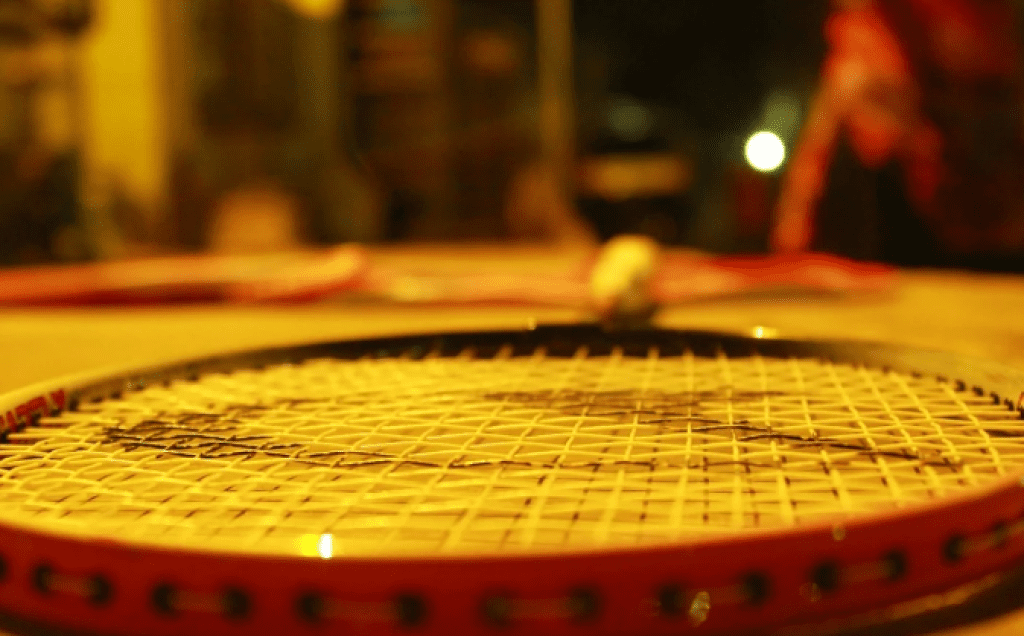
Ⅵ. Maintenance and Care of Badminton Rackets
1. Daily Storage Tips
Proper storage of badminton rackets is crucial for extending their lifespan and maintaining their optimal performance. Here are some tips for storing your racket:
- Avoid Extreme Conditions: Do not place the racket in environments with high temperatures, humidity, or direct sunlight. High temperatures can cause the carbon fiber material to deteriorate and become soft, affecting its strength and elasticity. Humidity can lead to rust and mold, damaging the internal structure. Direct sunlight can cause the color to fade and may even deform the frame. Store the racket in a cool, dry, and well-ventilated indoor area.
- Prevent Pressure and Impact: Avoid placing heavy objects on top of the racket to prevent frame deformation. If you have multiple rackets, store them separately to avoid squeezing or rubbing against each other. Additionally, protect the racket from sharp objects to prevent scratches or damage to the frame and shaft.
- Use a Racket Stand: Ideally, hang or place the racket on a dedicated racket stand to maintain its shape and avoid deformation from prolonged flat storage. If a stand is not available, place the racket in a dedicated cover and store it upright in a cabinet or corner.
- Maintain String Tension: For rackets that are already strung, ensure that the strings are evenly tensioned during storage. Avoid leaving the racket twisted or bent for extended periods to prevent affecting the string’s lifespan and performance.
2. Timing and Method for Replacing Strings
(a) Timing for Replacement
Consider replacing your badminton racket strings based on the following factors:
- Wear and Tear: Regularly check the surface of the strings for noticeable wear, fraying, scratches, or breaks, especially in the sweet spot. If any of these signs are present, it’s time to replace the strings.
- Loss of Tension: Over time, the tension of the strings will decrease. If you notice a significant drop in the speed and control of the shuttlecock or if the strings feel too loose and no longer provide adequate elasticity and power feedback, replacement may be necessary.
- Frequency and Intensity of Play: Players who engage in high-intensity badminton frequently will experience faster wear and loss of string tension. Generally, players who play 2-3 times a week with high intensity might need to replace their strings every 2-3 months.
- Personal Feel and Technique: Some players are very sensitive to the performance of their strings. If you feel that the current strings do not meet your technical requirements and hitting feel, even if there is no visible wear, consider replacing them.
(b) Replacement Method
Replacing badminton racket strings involves the following steps:
- Prepare Tools: You will need a badminton stringing machine (or manual stringing tools), scissors, stringing pliers, starting clamps, and grommets.
- Remove Old Strings: Start by undoing any knots in the strings. Remove the old strings from the top or bottom of the racket frame, being careful not to damage the frame or grommets.
- Check Grommets: After removing the old strings, inspect the grommets on the racket frame for any signs of wear, cracks, or deformation. Replace any damaged grommets to prevent the new strings from getting damaged.
- Choose the Right Strings: Select appropriate strings based on your skill level, playing style, and personal preference. Common types of strings include nylon, polyester, and gut strings, each with different characteristics and suitability.
- String the Racket: Attach one end of the new string to a hole in the racket frame and follow the predetermined stringing pattern (e.g., two-piece or four-piece method) to thread the string through the holes. Ensure even tension throughout the stringing process to avoid over-tightening or slackness.
- Tighten the Strings: Using the stringing machine or manual tools, gradually tighten each string to the desired tension. Regularly check for even tension and monitor the frame for any deformation.
- Tie Off and Cut Excess String: Once all strings are in place and tensioned, tie off the ends securely. Cut any excess string with scissors, being careful not to leave too much string, which could loosen.
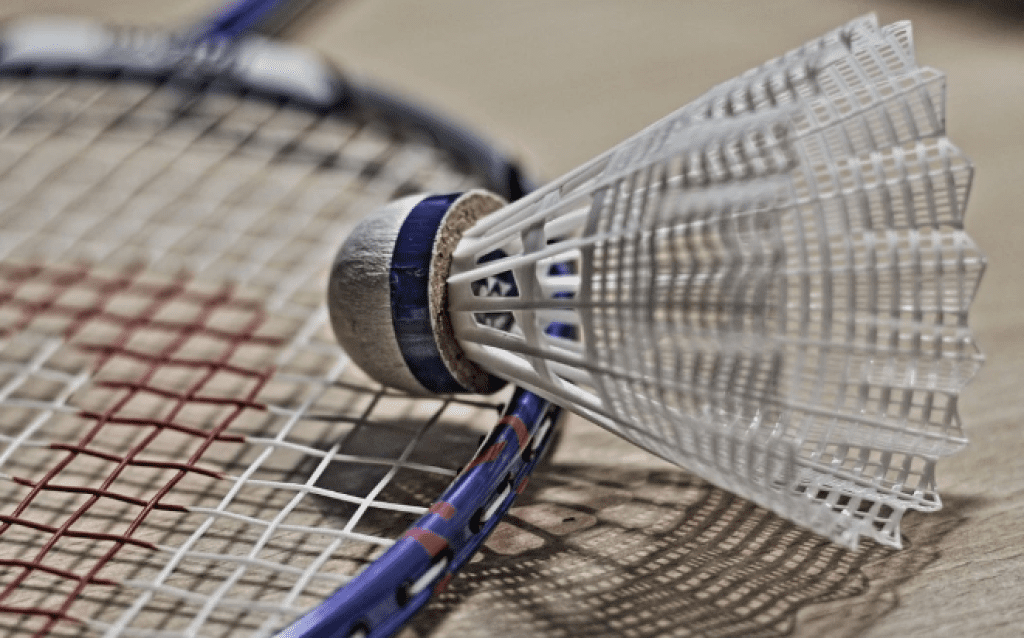
3. Handle Maintenance
The handle of a badminton racket directly affects grip comfort and the feel of hitting, so regular maintenance is essential.
- Keep the Handle Clean: After each use, wipe the handle with a clean, damp cloth to remove sweat and dirt. If sweat has accumulated and caused an odor, you can wash it with mild soap and water, but ensure the handle is thoroughly dried to prevent mold.
- Check the Grip Tape or Overgrip: Regularly inspect the grip tape or overgrip for wear, thinning, or loss of tackiness. Replace it if necessary. When replacing, completely remove the old grip tape or overgrip, clean the handle surface, and then wrap a new one. Ensure proper tension and overlap during wrapping to maintain good grip and comfort.
- Long-Term Storage: If the racket is not used for an extended period, consider removing the grip tape or overgrip to prevent aging and deformation.
- Wooden Handles: For rackets with wooden handles, be cautious about moisture. Moisture can cause deformation and cracking. After use in humid environments, dry the handle thoroughly and store it in a well-ventilated area.
4. Frame Protection
The frame is a critical part of the badminton racket that affects both performance and durability, so special attention is needed for its protection.
- Avoid Collisions: During play, avoid hitting the frame against other rackets or objects, as this can cause deformation, breakage, or paint chipping. If accidental contact occurs, immediately check the frame for damage.
- Inspect the Frame: After each use, check the frame for any cracks or damage. If you find any minor cracks, stop using the racket and consult a professional for repair or replacement.
- Maintain Distance in Doubles: In doubles play, keep a safe distance from your partner’s racket to avoid collisions. Also, avoid placing the racket on the ground or letting it rub against other objects to prevent damage to the frame’s paint and structure.
- Use Frame Protectors: Consider using protective tape or a frame protector on the edges of the frame to reduce wear and collision damage. However, ensure that these protective measures do not affect the racket’s performance and balance.
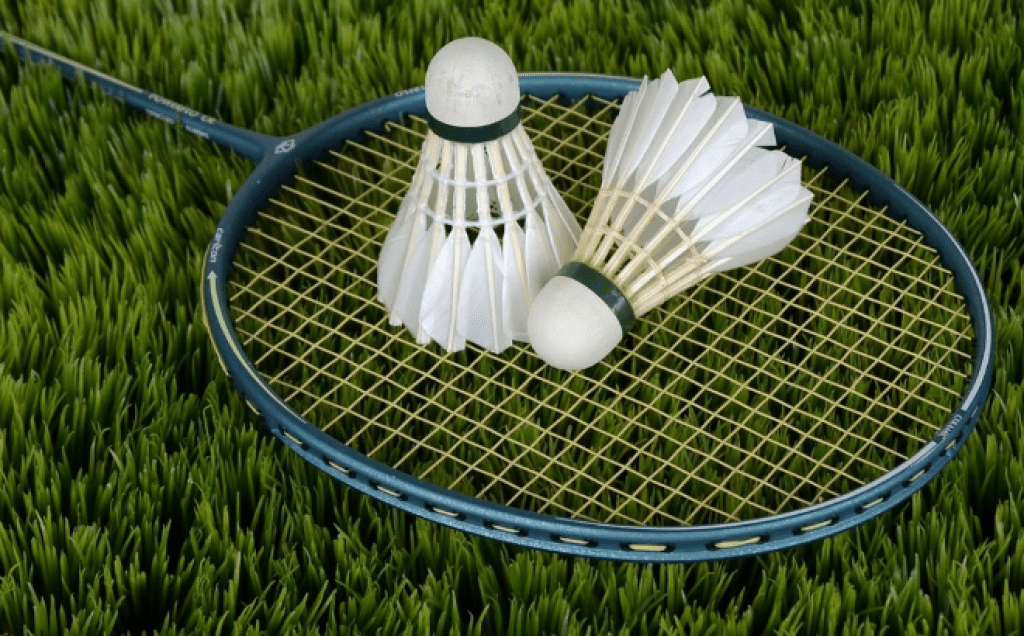
Ⅶ. Conclusion
1. Key Points for Choosing a Badminton Racket
Selecting the right badminton racket is crucial for enhancing your playing experience and improving your skills. Here are the key points to consider when choosing a racket:
- Understand Your Needs and Skill Level: First, determine your purpose for playing—whether it is for casual play, fitness, or competitive matches. Also, have a clear understanding of your skill level, including your power, speed, and control.
- Consider the Racket Type: Choose between attacking, defensive, or balanced rackets based on your playing style. Attacking rackets are suitable for players who prefer powerful smashes and speed; defensive rackets are better for those who focus on quick reflexes and flexible defense; balanced rackets are ideal for players with versatile skills and adaptable play.
- Pay Attention to Racket Parameters:
- Weight (U): Select the racket weight based on your strength. Stronger players may opt for heavier rackets, while those who prioritize agility should choose lighter ones.
- Shaft Hardness (S): Shaft hardness affects power transfer and control. Beginners and players with less strength should start with a softer shaft, while more advanced players can move to a stiffer shaft as their skills improve.
- Balance Point: The balance point influences the racket’s aggressiveness and defense. Attacking rackets have a higher balance point, defensive rackets have a lower balance point, and balanced rackets have a central balance point.
- Frame Shape: Different frame shapes offer various benefits. Box-shaped frames are stable and suitable for attacking; aerodynamic frames offer speed and are good for defense and counter-attacks; hybrid frames combine the advantages of both.
- Head Shape: Square heads provide a larger sweet spot and more power; round heads offer better control and are suited for players with refined techniques.
- String Tension: Choose string tension based on your skill and strength. Beginners usually start with lower tension, gradually increasing it as they progress.
- Brand and Price: Well-known brands often ensure better quality and performance but come at a higher price. Choose according to your budget and brand trust.
- Try Before Buying: If possible, test different rackets to assess their feel, weight, and balance to find the one that suits you best.
2. Tips for Beginners
For beginners, choosing a badminton racket can be confusing, but following some basic principles can help in selecting a suitable racket for a great start in badminton.
- Avoid High-End Models: As a beginner, you don’t need to pursue high-end, expensive rackets. A reasonably priced, versatile racket can meet your needs as you develop your skills and strength. Opt for entry-level or mid-range models from reputable brands, which are designed for ease of use and general performance.
- Seek Advice but Make Your Own Choice: Listen to recommendations and experiences from other players, but don’t rely solely on others’ opinions as everyone’s preferences and needs are different. If possible, visit a physical store to try out different rackets and feel their differences.
- Maintain Your Racket: Once you purchase a racket, take proper care of it to extend its lifespan and maintain its performance.
- Embrace the Learning Process: Don’t let concerns about your skills prevent you from trying and choosing. Badminton is a fun and challenging sport, and each shot and improvement is worth celebrating. Maintain a positive attitude, bravely pick up your racket, and keep learning and growing on the court. With effort and perseverance, you’ll gradually improve your skills and enjoy the joy and satisfaction of playing badminton.
I hope every beginner finds their ideal badminton racket and enjoys the sport, gaining health and happiness along the way!

Leave a Reply